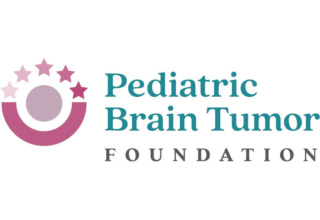Pediatric Brain Tumor Foundation Statement on the Reported NIH Grant Review Pause
The Pediatric Brain Tumor Foundation (PBTF) invests in research that focuses on understanding childhood brain tumors’ cellular and molecular biology, which most importantly opens avenues for more rapid scientific discovery of novel diagnostic and treatment approaches. Pediatric brain tumor tissue banking plays a critical but often overlooked role in these groundbreaking childhood cancer discoveries. Unfortunately, childhood cancer investigators face a shortage of tumor tissue samples to study as they work to translate laboratory discoveries into targeted clinical therapies that lead to less toxic treatments and improve survival.
PBTF recognizes the importance of building a meaningful tumor tissue and clinical data repository. To address this shortage, the PLGA Fund at PBTF has provided financial support to institutions, pathologists, and other clinical team members for more than a decade to help develop their tumor tissue banking infrastructure as well as cover the salaries of Clinical Research Assistants (CRA), experts who work with patient families to explain the process and gain consent for the donation of their child’s leftover brain tumor tissue or biopsy specimens not needed for their clinical care to use in research studies.
In 2019, PBTF renewed a 2-year grant to support the Dana Farber/Boston Children’s Cancer and Blood Disorders Center CRA position by providing support for the David Andrysiak Clinical Research Assistant Award to Keith Ligon, MD, PhD, Neuropathologist at Dana-Farber/Boston Children’s. This $132,000 grant is the sixth consecutive investment the PLGA Fund at PBTF has made to support this position since 2009. PBTF’s award is named in memory of David Roswell Andrysiak, who lost his battle with pediatric low-grade astrocytoma (PLGG), the most common form of childhood brain tumor, in 2019 at the age of 18. His tissue donation provided one of the greatest gifts a pediatric cancer patient and their family can give others – understanding and hope.
While PLGG typically has excellent long-term survival rates, death can occasionally occur for poorly understood reasons. To better understand whether PLGG in patients who passed away have unique characteristics, researchers need to study tissue samples at diagnosis, recurrence, and, if necessary, after death from patients who generously donated their brains through autopsy programs. With the data generated from tissue collection with PBTF’s support, Dr. Ligon and Sanda Alexandrescu, MD, Neuropathologist at Boston Children’s Hospital, recently co-led publication of an article that focuses on the diverse molecular characteristics and cause of death in a cohort of 48 PLGG patients. Their findings from sequencing 33 patient tumors suggested that death was not pre-determined by the initial mutation that caused the tumor and that improved outcomes will require new drugs against the mutations in addition to addressing other factors in a patient’s care.
“The Clinical Research Assistant Award has provided a much-needed boost to our program by supporting the personnel that makes this work possible,” says Dr. Ligon. “Thanks to our partnership with the PLGA Fund at PBTF, we have seen encouraging progress in the advancement of our precision medicine goals for children. Their funding through this sustained multi-year effort to collect data and sample tissue in support of clinical trial enrollment is crucial to improving treatments for patients. It is particularly important in PLGG patients who deal with their tumor over many years of time and partnering with them and their families in a longitudinal study to follow changes in their tumor is critical to finding new clues to better and safer cures.”
“At PBTF, we believe a world without childhood brain tumors is possible. Patient tissue samples ensure that Dr. Ligon and others across the research community have the material necessary to understand better why some tumors are vulnerable to specific treatments and resistant to others,” says Amy Weinstein, PBTF’s National Director of Research Investments and Advocacy. “We are proud to support the expert, compassionate care the Clinical Research Assistant provides children and their families with this important award.”
Having a child diagnosed with a brain tumor is one of the most painful and difficult situations a family can face. Both PBTF and DFBCCC appreciate the altruism of families navigating their child’s cancer journey who have agreed to donate tissue from their child’s brain tumor. This legacy gift offers researchers many opportunities to increase the understanding of pediatric brain tumors and the development of new treatments in their search for a cure.
Learn more about PBTF’s research strategy at www.curethekids.org/research. If you or a family you know need support following a child’s brain tumor diagnosis, our team is here for you. Call or email us at 800-253-6530, x306 and [email protected].
About the Pediatric Brain Tumor FoundationEvery day, 13 children and teens are diagnosed with a brain tumor, the deadliest and most common form of cancer in kids under 15. Every day after, they are in a fight for their life. It’s a fight the Pediatric Brain Tumor Foundation is here to help families win. A leader in the brain tumor and childhood cancer communities, PBTF’s mission of Care. Cure. Thrive. reflects its commitment to curing all pediatric brain tumors and transforming how children and their families are cared for. Since 1991, PBTF has provided strategic leadership and funding to accelerate the number of targeted therapies for children battling brain tumors today, while equipping families with the patient-family education, financial relief, and emotional support they need to navigate their child’s journey. A world without childhood brain tumors is possible when we work together to put kids first. Learn more at www.curethekids.org.
Hydrocephalus, commonly known as “water on the brain,” is a condition that can occur in children with brain tumors. It involves an accumulation of cerebrospinal fluid (CSF) that can cause increased pressure inside the skull, leading to various symptoms and complications.

